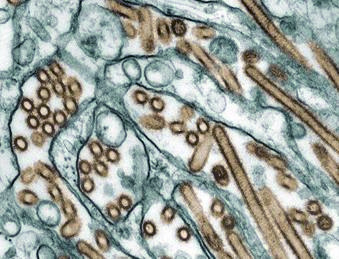



Stewartstown Emergency Management
Are you a boy scout and working towards your Eagle Scout award? Contact the Borough Office to find out when the next Emergency Management Committee meeting is held to discuss a project in this area you can use towards your Eagle Scout.
Emergency Management Operations Center:
The Stewartstown Emergency Management Operations Center (EOC) is located in the borough office. It is equipped with an emergency generator, two-way radios (base & portable) and over-night supplies (some sleeping bags, blankets, air mattresses, etc.) In the event of an emergency that would cause citizens to leave their homes, these supplies would be made available to you. We have been accumulating the above mentioned supplies over the last few years. However, due to limited budget allocations, it has taken a lot longer than if we had unlimited funding. As a consequence, the supplies are limited. If you have any used (but useable) sleeping bags, blankets, air mattresses, pillows, etc. and would like to donate them to the borough, we do have a storage area set aside for such items. Hopefully, we will never have to use this capability . . . but if we do it will surely make a bad situation a little more tenable if we are prepared.
New Emergency Prepardness - Homeland Security and Ad Council
People need to be ready if a significant emergency or disaster happens in the community, and a new Web site and public service announcements will help to ensure that people are prepared, according to the York County Office of Emergency Management.
In partnership with the Ad Council and the U.S. Department of Homeland Security, three localized versions of "READY" public service announcements have been made to urge community members to think about their level of preparedness and to encourage them to visit the new Web site: www.ready-york.org .
The Web site provides citizens with valuable information about how to prepare for various man-made and natural emergencies and disasters.
DOWNLOAD THE STEWARTSTOWN EMERGENCY MANAGMENT INFORMATION SHEET

As Stewartstown's Emergency Management Coordinator, I recently attended a workshop in Hanover on this subject. While there is no need to panic, there are some things we all need to be aware of in case of an outbreak of Pandemic Influenza. There will be other workshops for the public but, in the meantime, I would recommend a visit to www.pandemicflu.gov. It has a wealth of information which you and your families should know about.
A pandemic is a global disease outbreak.
A flu pandemic occurs when a new influenza virus emerges for which people have little or no immunity, and for which there is no vaccine. The disease spreads easily person-to-person, causes serious illness, and can sweep across the country and around the world in very short time.
It is difficult to predict when the next influenza pandemic will occur or how severe it will be. Wherever and whenever a pandemic starts, everyone around the world is at risk. Countries might, through measures such as border closures and travel restrictions, delay arrival of the virus, but cannot stop it.
Health professionals are concerned that the continued spread of a highly pathogenic avian H5N1 virus across eastern Asia and other countries represents a significant threat to human health. The H5N1 virus has raised concerns about a potential human pandemic because:
✔ It is especially virulent
✔ It is being spread by migratory birds
✔ It can be transmitted from birds to mammals and in some limited circumstances to humans
✔ Like other influenza viruses, it continues to evolve.
Since 2003, a growing number of human H5N1 cases have been reported in Azerbaijan, Cambodia, China, Djibouti, Egypt, Indonesia, Iraq, Lao Democratic People's Republic, Nigeria, Thailand, Turkey, and Vietnam. More than half of the people infected with the H5N1 virus have died. Most of these cases are all believed to have been caused by exposure to infected poultry. There has been no sustained human-to-human transmission of the disease, but the concern is that H5N1 will evolve into a virus capable of human-to-human transmission. And if that happens, being prepared can make all the difference in the world.
WINTER WEATHER PREPAREDNESS
York County Emergency Management has prepared a check list to follow to prepare your home and vehicle for winter weather emergencies.
York County / Weather Guidelines
Pennsylvania Emergency Preparedness Guide
Pennsylvania Guia de Preparacion para Emergencias (PDF)
WEAPONS OF MASS DESTRUCTION & EMERGENCY ACTIONS
This document is intended to provide general information to assist in efforts to recognize potential WMD-related threats or incidents. The information is not all encompassing, and its applicability should be evaluated on a case-by-case basis, in accordance with local conditions, policies and procedures.
Chemical, biological and radiological material can be dispersed in the air we breath, the water we drink or on using conventional (garden)/commercial spray devices or detonating an improvised explosive device to disseminate chemical, biological or radiological material.
Chemical incidents are characterized by the rapid onset of medical symptoms (minutes to hours) and easily observed or radiological incident, the onset of symptoms requires days to weeks and there are typically few characteristic signatures.
In all cases, being alert to the following could assist law enforcement and emergency responders in evaluating potential threats.
Potential Indicators of WMD Threats or Incidents
✔ Unusual packages or containers, especially those found in unlikely or sensitive locations, such as near HVAC or air intake systems.
✔ Unusual powders or liquids/droplets/mists/clouds, especially those found near air intake/HVAC systems.
✔ Indications of tampering in targeted areas/equipment (i.e., locked ventilation/HVAC systems, stocks of food, water supply).
✔ Suspicious person(s) or activities, especially those involving sensitive locations within or around a building (well houses, water towers, telephone central offices, reservoirs, pump houses, etc.).
✔ Surveillance of targeted areas, including but not limited to hotels, entertainment venues, subway systems, aircraft, water sources, office buildings and apartment buildings.
✔ Theft of chemical products/equipment (i.e. pool chemicals, fertilizers, etc.).
✔ Dead animals/birds, fish or insects.
✔ Unexplained/unusual odors. Smells may range from fruity/flowery to sharp/pungent, garlic or horseradish like, bitter almonds, peach kernels, and new mown grass/hay (where no grass has been cut nearby).
✔ Unusual/unscheduled spraying or discovery of spray devices or bottles.
Protective Measures
✔ Maintain a heightened sense of awareness.
✔ Place an increased emphasis on the security of immediate surroundings.
✔ Conduct periodic inspections of building facilities and HVAC systems for potential indicators or irregularities.
✔ Review emergency operations and evacuation plans/procedures for all locations/organizations to ensure that plans are up to date.
✔ Promptly report suspicious activities to appropriate law enforcement authorities.
Emergency Procedures - Potential Threat Identified/Confirmed
✔ Maintain a safe distance/evacuate area (if outside move to an upwind location and if inside keep outside doors/windows closed).
✔ Call your local 911 (law enforcement and public safety personnel) after reaching a safe area.
✔ Do no handle or disturb suspicious objects.
✔ Remove possibly contaminated external clothing (including hats, shoes, gloves).
✔ Follow emergency operations plans/instructions from emergency response personnel.
Prepare a Home Disaster Kit
With some disasters, like hurricanes, tornadoes, and blizzards, you will likely have some warning. Other disasters, as on September 11, 2001, happen without a moment's notice. To avoid the helplessness that can accompany such an event, a little prepardness can go a long way.
A basic home emergency kit can make a major difference in minimizing the damage after (or during) a disaster . . .
One of the best resources you can have in your home is a packpack or similar container. These make excellent disaster kits. Your basic kit should include some food, like a jar of peanut butter and some crackers. Select food items that require no refrigeration in containers that can be resealed if you don't use all of it at one time. Ready-to-eat canned vegetables, fruits, and juices in small, single-serving cans are some examples (be sure you have a can opener). Include plastic utensils, paper plates and cups. Bottled water is a good idea (3 gallons per person is recommended).
Include a basic first aid kit with bandages, band-aids, antiseptic, thermometer, tweezers, scissors, eye cup and surgical gloves. A good sturdy blanket like an army blanket can protect against debris and keep you warm . . . thermal underwear is a good idea as well.
Other items to include:
✔ Flashlight & Batteries
✔ Battery-Operated Radio (with spare batteries)
✔ Work Gloves
✔ Manual Can-Opener
✔ Wrench & Pliers (in case you have to turn off water or gas)
✔ Comfort items (toothbrush & paste, razor, deodorant, tampons, kleenex, toilet paper, plastic garbage bags (for personal sanitation use as well as trash), paper towels, disinfectant, antibacterial hand soap, note pad, pencil & paper, medications (prescription as well as over-the counter like aspirin etc.)
bullet Some Cash (ATM' won't help if power is out).
Don't forget supplies for any pets.
Maintain your disaster kit. For example, when daylight savings time changes (twice a year), change your bottled water, medications and batteries.
Store your kit in a convenient place known to all family members. Devise a plan so that if you aren't together when a disaster occurs, you can meet at a pre-established location if you have to leave your home. Make up smaller kit for the trunk of your car. Speaking of your car, make sure you always have a full tank of gas.
Remember, a little preparation goes a long way. It may just be the difference in surviving a disaster.
Stewartstown Borough
6 North Main Street
Stewartstown, PA 17363
Phone: (717) 993-2963
Fax: (717) 993-2131
Email: borough@stewartstown.org
Copyright 2025 Stewartstown Borough - All Rights Reserved.
Site Design and Hosted by Sunken Treasure Design